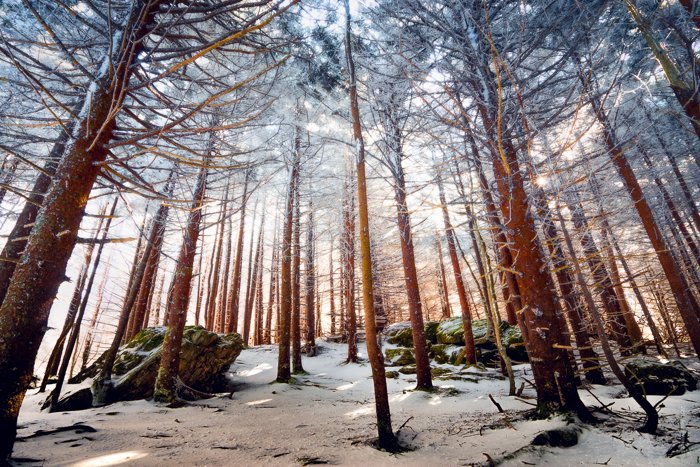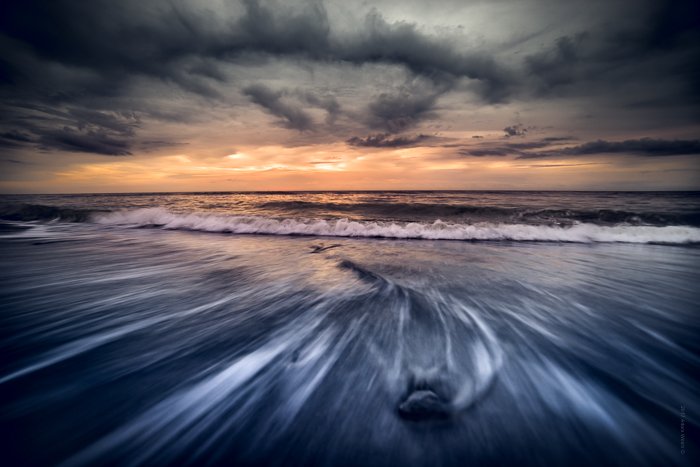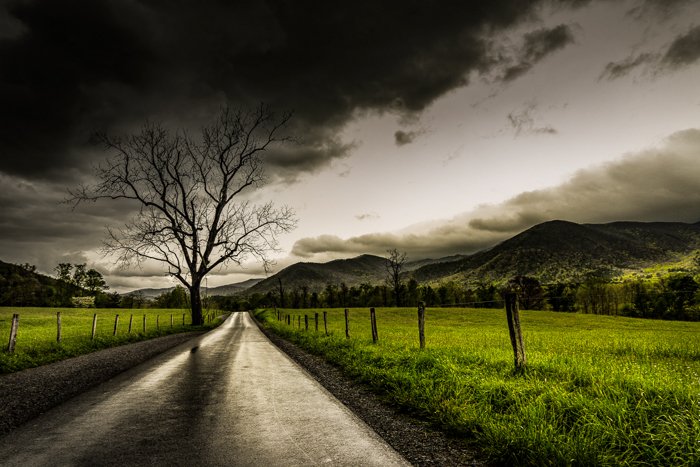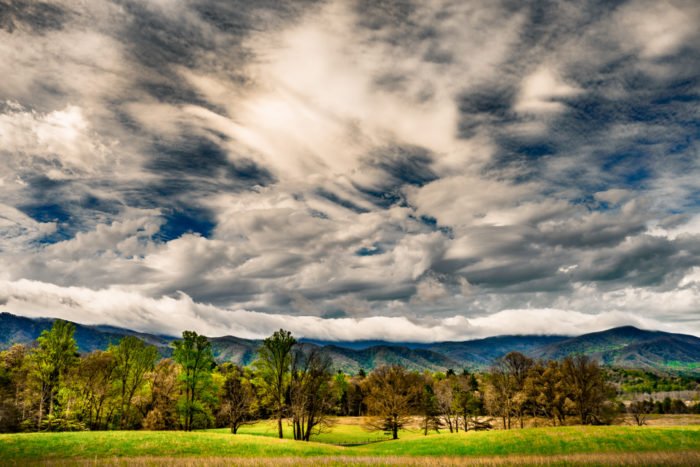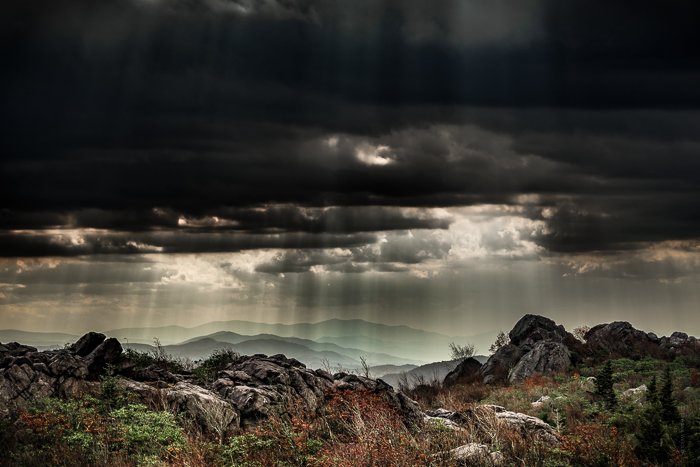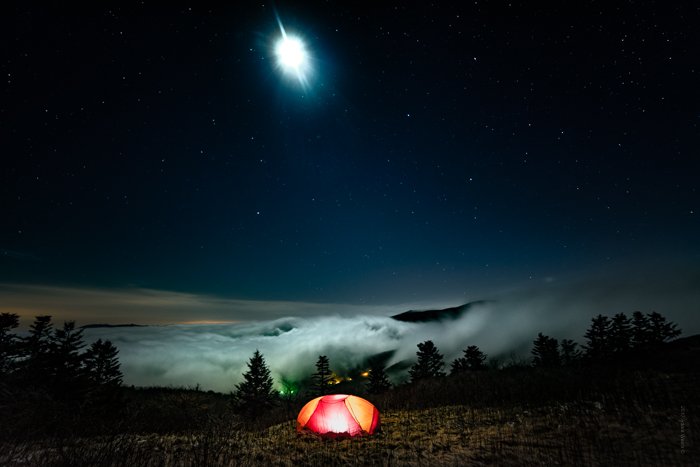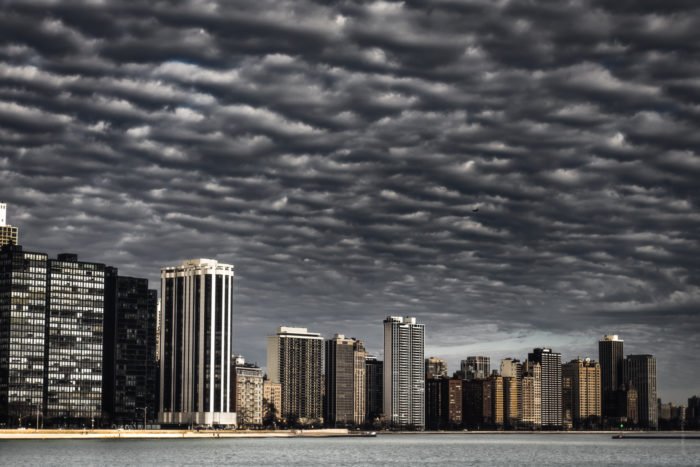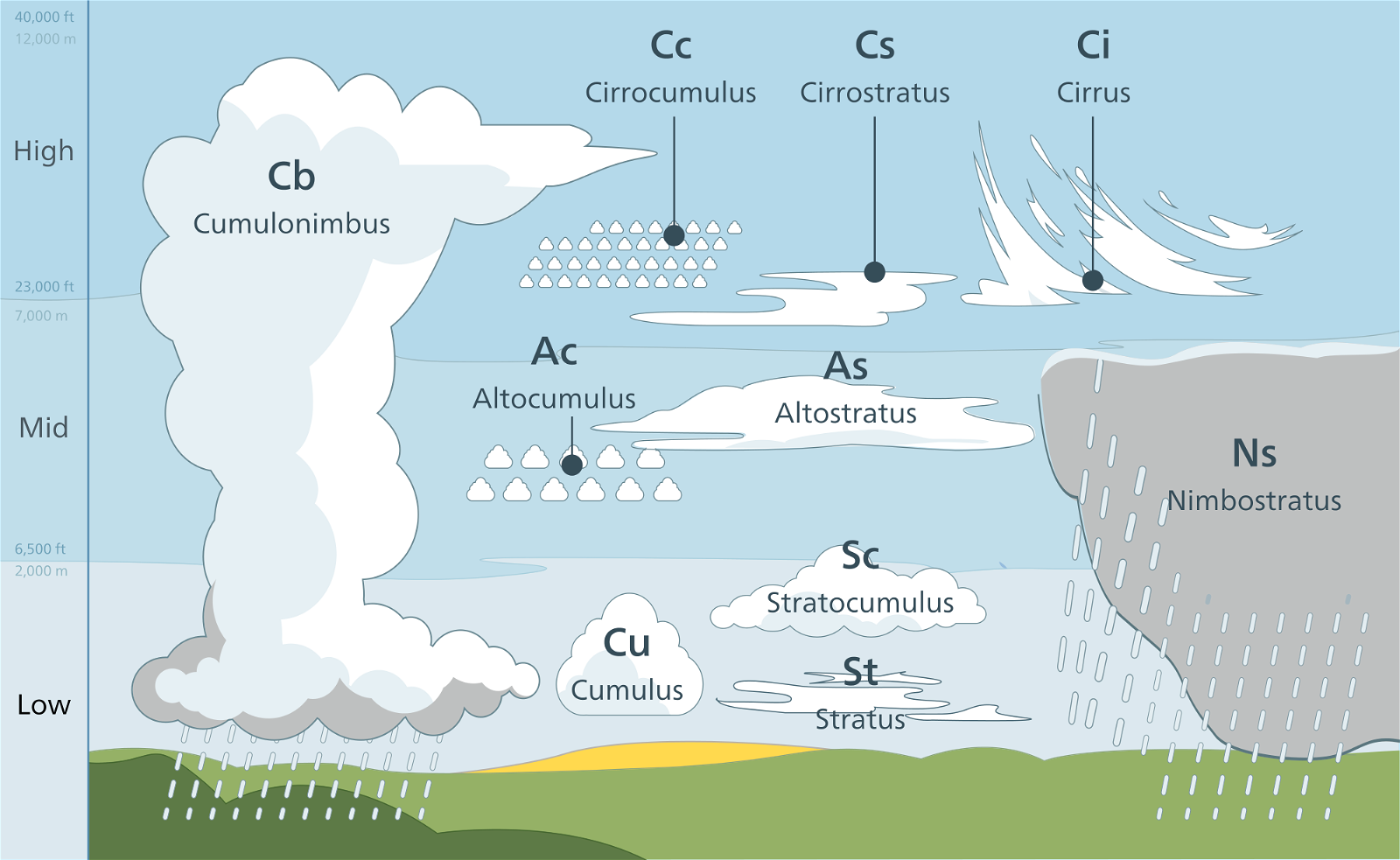[ExpertPhotography is supported by readers. Product links on ExpertPhotography are referral links. If you use one of these and buy something, we make a little bit of money. Need more info? See how it all works here.]
Weather Photography: How to Highlight Dramatic Weather
Dramatic weather doesn’t always mean extreme weather (although that is certainly dramatic!) No, we’re just talking about weather conditions that vary from the bright, clear, and mild days that you probably wait for when you want to take landscapes. Conditions like these enable you to add more contextual information and interest to the frame by incorporating elements of the weather into your photos. This can mean the difference between ‘meh’ and ‘WOW’. This is especially true when shooting landscapes in highly photographed areas. When most everyone else’s images look the same yours can be truly above the rest just by adding in a little meteorological flair. There are a number of weather apps that you can install on your smartphone that will help you anticipate cloudy, foggy, rainy, snowy, or otherwise interesting weather days. ExpertPhotography recommends Weather Underground (iOS | Android | Windows Phone), as it’s easy to use and gives you updated information of what the weather will be like at very specific times and locations.
Braving the Storm: Thunderstorm Photography
Stormy Skies
More often than not, the most common weather-related drama you will encounter is rain-related. Rain and storm clouds add instant interest to virtually any scene and it’s especially true when it comes to landscape photography. They completely change the ambient light in the scene, and add large shapes and textures to what would otherwise be a blank sky. Instead of having the sky as a blank background, you may well find the subject of your image there in the form of an imposing cumulonimbus cloud (sometimes called a ‘thunderhead’). These aren’t the most common of subjects (some storm-chasing photographers hunt them like wild game), and when found, they are impressive. When the sky turns mean, the entire mood of the photograph changes. What was once a cheery and upbeat sunny meadow can become a brooding and dark scene with tons of emotion. Tips for shooting in stormy weather:
When large clouds roll in, balance their visual weight with the objects in the frame, and compose your shot so that the clouds add contrast to foreground and background elements. Try a wide angle lens. Shooting at wider angles (shorter focal length) gives a sense of smallness to the viewer compared to the storm. Protect your camera and lens! Only take your lens cap off to compose, focus, and make the exposure. Use a quality microfiber lens cloth to dry the lens face of any raindrops and consider a low-cost rain cover.
Wind
Wind can lend a sense of motion and action to your scene. Low- to medium-strength winds are ideal. This will bend and push the elements in the landscape in directions that they wouldn’t normally lean towards in calmer weather. Tip for shooting in windy conditions:
Depending on the light, try a shutter speed of 1 second or more to add a sense of motion to the image. Use a tripod (make sure to weigh it down at the bottom) or find another stable shooting platform to avoid camera shake!
Lightning: Dangerous Beauty
Nailing an epic picture of lightning is almost a rite of passage for some landscape photographers. Lightning is one of nature’s most impressive magic tricks and the conditions encountered a storm can often produce some really stunning pictures of lightning. We’ll talk about how to photograph lightning in another article but for now, it’s simply worth mentioning to be on the watch when making photographs during thunderstorms as you may want to attempt to capture lightning in your thunderstorm images. Lightning is amazing. Lightning strikes…not so much. Make sure to be safe if you are trying for this type of shot. Lightning safety tips for shooting during storms:
Judge how far off the lightning strikes are. You’ll always see lightning first, then hear the thunder. As a rule of thumb, if the time between when you see lightning and hear thunder is five seconds or less, stop shooting and seek safe shelter. Avoid being the tallest thing in the area; shooting from inside a car is actually quite safe. It’s possible to get a good photo through an open car window; just make sure to steady your camera when trying. Make sure that there is help nearby in the event that you receive a lightning shock. An assistant or travel companion for the shoot who can administer CPR or otherwise call for help is recommended.
After the Storm
You don’t have to be right in the middle of a raging thunderstorm to get great results with your dramatic weather photography. Sometimes it’s the times right before or immediately after a storm which can lend themselves as the most beautiful moments to make a photo. Reflections after a downpour are plentiful and offer amazing creative opportunities. Reflective surfaces such as puddles and recently dampened surfaces can add a measure of ambient light or act as a mirror that can help add interest to the composition. The added moisture from rain usually causes mist and fog (fog photographs are crowd-pleasers) that instantly transform any scene.
Tips for after the storm:
Make sure that there is help nearby in the event that you receive a lightning shock. An assistant or travel companion for the shoot who can administer CPR or otherwise call for help is recommended.
Clouds: A Landscape Photographer’s Best Friend
Dramatic weather doesn’t necessarily mean storms and gales; the appearance of a variety of different types of clouds can be dramatic in its own right. It’s funny how the grandeur of even the most spectacular of landscapes can be dulled down by a flat and boring sky. The sky has always played a huge role in successful landscape images. Clouds generally add mood and drama and depending on the type of clouds, your cloud photography can really liven up an otherwise unassuming landscape scene. Clouds accompany approaching weather fronts and usually the time before a thunderstorm will mean lots of clouds even a day or two before the storm actually hits. With a variety of clouds in the sky, you’ll have more shapes and forms which can draw the eye and add a level of natural beauty to the scene. If you can time it just right, sunrises and sunsets love clouds and make wonderful light beams and shadows as the golden sun punches its way between the clouds. If you’re photographing landscapes in more mountainous areas, clouds become even more important during the late and early hours of the day as temperatures cool. The clouds (and their close cousin, fog) generally drop down into valleys and give an almost otherworldly feeling to scenes shot from above. When you find yourself in the middle of a low cloud or a dense fog, you should know that the water droplets in the air will reduce contrast and color saturation. The moisture in the air acts like a natural softbox, diffusing light so that the areas around it are more gently lit. The fog also has the effect of obscuring shapes and forms of objects in the scene, which can be used for dramatic effect. Even skylines and urban landscapes just seem to get better when the clouds move into the picture. A normal clear sky can be made more interesting with texture of the clouds and balancing out the composition. The graphic below shows the most common types of clouds, their shapes, and their locations in the atmosphere. Different conditions produce different types of clouds and patterns (such as the so-called ‘mackerel sky’) and with a little research you should be able to figure out what kinds of clouds to expect on a given day.
Tips for Photographing Clouds
Place the sky as the centrepiece of your photo. Compose your image with the foreground in the bottom third of the frame. Don’t be afraid of a long exposure! Five seconds or more works wonders with clouds. Lower your aperture (make the f-number larger) to compensate for the longer exposure. If needed, pick up a quality neutral density filter to help when conditions are too bright. When post-processing, lower the highlights and boost the contrast in order to give your clouds an instant texture boost.
Final Thoughts
Capturing dramatic weather photography comes down to being aware of how the weather is changing your shooting environment. If you pay attention to the quality of the light and the elements that are being introduced into your frame, you can compose and expose for them in ways that give you some impressive images. The outing itself has to be a dramatic undertaking either. Always use good judgement. If you don’t have the correct gear, supplies (warm clothes, rain gear, etc.), or mindset, don’t risk your personal safety or the safety of your precious camera gear. Always be informed of the weather conditions and make the best of every day you are given to make photographs. Bad weather doesn’t have to mean you’re stuck indoors. As a photographer, consider it an invitation to make some unique images.


